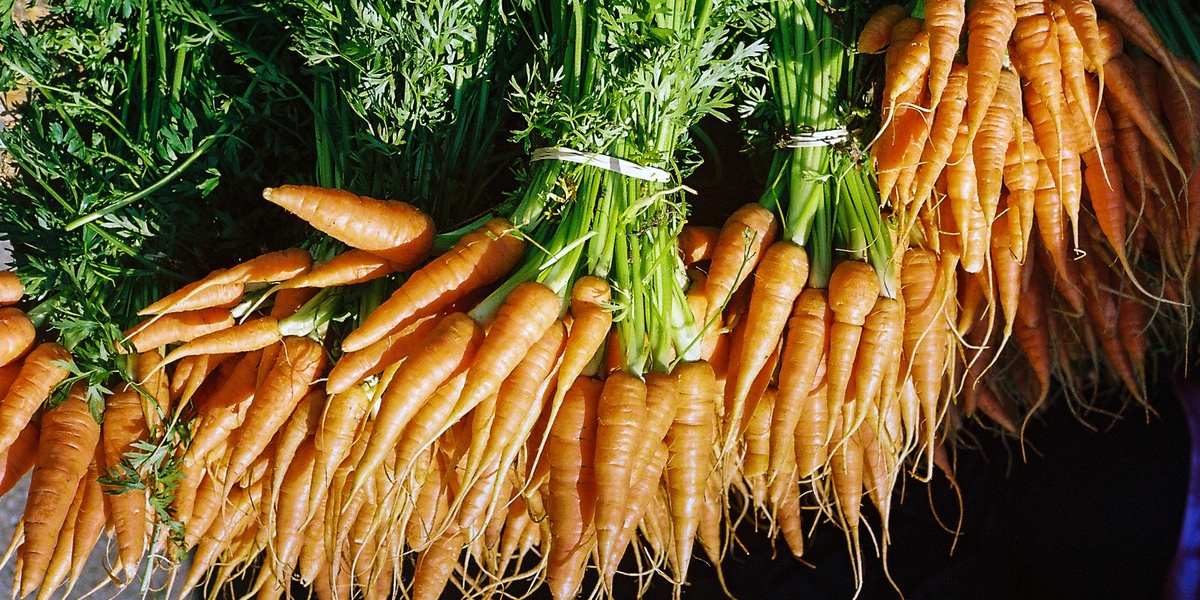Whether you’re browsing a farmers’ market, planning a kitchen garden, or updating a recipe box, knowing which vegetables grow where makes decisions easier and more successful. This list gathers familiar staples and some lesser-known edibles so you can pick varieties that suit season, soil, and taste.
There are 83 Vegetable Examples, ranging from Acorn Squash to Zucchini. Each entry is organized with Scientific name,Category,Region / where grown to help you compare varieties; you’ll find below.
How can I use the list to pick vegetables for my garden or local market?
Look at the Region / where grown column first to narrow choices that match your climate, then check Category for growth habit (leafy, root, fruit) and the Scientific name when buying seeds or seedlings to avoid confusion between common names.
Should I treat the Scientific name,Category,Region / where grown data as definitive?
Use the columns as a practical guide rather than an absolute rule—region notes reflect typical cultivation but microclimates and varieties vary; double-check with seed packets, local extension services, or nurseries for precise planting advice.
Vegetable Examples
| Name (common) | Scientific name | Category | Region / where grown |
|---|---|---|---|
| Carrot | Daucus carota | Root | Native to Persia; now grown worldwide, especially in temperate climates. |
| Potato | Solanum tuberosum | Tuber | Native to the Andes Mountains; now a global staple crop. |
| Tomato | Solanum lycopersicum | Nightshade | Native to western South America; now grown globally in temperate and warm climates. |
| Lettuce | Lactuca sativa | Leafy | Native to the Mediterranean; now grown worldwide. |
| Onion | Allium cepa | Bulb | Native to Central Asia; cultivated worldwide for over 5,000 years. |
| Broccoli | Brassica oleracea | Flower | Native to the Mediterranean; now widely grown in temperate climates. |
| Cucumber | Cucumis sativus | Gourd | Native to South Asia; now grown in temperate and tropical regions worldwide. |
| Bell Pepper | Capsicum annuum | Nightshade | Native to Mexico, Central America; now cultivated worldwide in warm climates. |
| Spinach | Spinacia oleracea | Leafy | Native to Persia (modern-day Iran); now grown globally in temperate climates. |
| Celery | Apium graveolens | Stem | Native to the Mediterranean basin; now grown in temperate regions globally. |
| Garlic | Allium sativum | Bulb | Native to Central Asia and northeastern Iran; now grown worldwide. |
| Cauliflower | Brassica oleracea | Flower | Native to the northeast Mediterranean; now popular in Europe, Asia, and the Americas. |
| Zucchini | Cucurbita pepo | Gourd | Developed in Italy; now grown in temperate climates worldwide. |
| Green Bean | Phaseolus vulgaris | Legume | Native to the Americas; now cultivated on every continent except Antarctica. |
| Pea | Pisum sativum | Legume | Native to the Mediterranean basin and the Near East; grown in cool climates. |
| Sweet Potato | Ipomoea batatas | Tuber | Native to tropical regions of the Americas; grown in warm climates worldwide. |
| Eggplant | Solanum melongena | Nightshade | Native to the Indian subcontinent; grown in warm climates globally. |
| Asparagus | Asparagus officinalis | Stem | Native to Europe and Western Asia; grown in temperate regions. |
| Cabbage | Brassica oleracea | Leafy | Native to coastal southern and western Europe; grown in cool climates. |
| Radish | Raphanus sativus | Root | Native to Asia; now cultivated and consumed throughout the world. |
| Kale | Brassica oleracea | Leafy | Native to the eastern Mediterranean and Anatolia; popular worldwide. |
| Beet | Beta vulgaris | Root | Native to the Mediterranean region; now grown in temperate climates globally. |
| Leek | Allium porrum | Bulb | Native to the Mediterranean and the Middle East; grown in cool climates. |
| Pumpkin | Cucurbita pepo | Gourd | Native to North America; now grown on every continent except Antarctica. |
| Artichoke | Cynara cardunculus | Flower | Native to the Mediterranean region; widely cultivated. |
| Swiss Chard | Beta vulgaris | Leafy | Native to the Mediterranean; grown in temperate regions. |
| Butternut Squash | Cucurbita moschata | Gourd | Native to the Americas; cultivated in warm climates worldwide. |
| Brussels Sprout | Brassica oleracea | Leafy | Native to the Mediterranean, cultivated near Brussels, Belgium; grown in cool climates. |
| Yam | Dioscorea spp. | Tuber | Native to Africa and Asia; grown in tropical and subtropical regions. |
| Turnip | Brassica rapa | Root | Native to Europe and Asia; grown in temperate climates. |
| Fennel | Foeniculum vulgare | Stem | Native to the shores of the Mediterranean; grown worldwide. |
| Kohlrabi | Brassica oleracea | Stem | A human-developed cultivar native to northern Europe; grown in temperate climates. |
| Collard Greens | Brassica oleracea | Leafy | Native to the eastern Mediterranean; popular in Southern US cuisine. |
| Parsnip | Pastinaca sativa | Root | Native to Eurasia; grown in cool, temperate climates. |
| Okra | Abelmoschus esculentus | Legume | Native to northeast Africa; grown in tropical and warm temperate regions. |
| Bok Choy | Brassica rapa | Leafy | Native to China; now cultivated in Asia, Europe, and North America. |
| Acorn Squash | Cucurbita pepo | Gourd | Native to North and Central America; grown in temperate regions. |
| Spaghetti Squash | Cucurbita pepo | Gourd | Native to the Americas; grown in temperate climates worldwide. |
| Jicama | Pachyrhizus erosus | Tuber | Native to Mexico; grown in warm climates. |
| Rutabaga | Brassica napus | Root | A hybrid originating in Scandinavia or Russia; grown in cool climates. |
| Watercress | Nasturtium officinale | Leafy | Native to Europe and Asia; now grown worldwide near springs and streams. |
| Endive | Cichorium endivia | Leafy | Native to the Mediterranean region; widely grown in Europe. |
| Arugula | Eruca vesicaria | Leafy | Native to the Mediterranean region; grown worldwide. |
| Chili Pepper | Capsicum annuum | Nightshade | Native to the Americas; now cultivated worldwide in warm climates. |
| Tomatillo | Physalis philadelphica | Nightshade | Native to Mexico; a staple in Mexican cuisine. |
| Corn | Zea mays | Gourd | Domesticated in southern Mexico; now one of the world’s most widely grown crops. |
| Rhubarb | Rheum rhabarbarum | Stem | Native to Asia; grown in cool climates. |
| Celeriac | Apium graveolens | Root | A cultivated variety of celery native to the Mediterranean; grown in Europe. |
| Shallot | Allium cepa | Bulb | Native to Central or Southwest Asia; cultivated worldwide. |
| Scallion | Allium fistulosum | Bulb | Native to Asia; grown worldwide. |
| Fava Bean | Vicia faba | Legume | Native to North Africa and southwest Asia; grown in temperate and cool climates. |
| Soybean (Edamame) | Glycine max | Legume | Native to East Asia; now a major global crop. |
| Chickpea | Cicer arietinum | Legume | Native to the Middle East; grown in tropical and subtropical regions. |
| Lentil | Lens culinaris | Legume | Native to Western and Central Asia; grown in temperate and subtropical climates. |
| Lima Bean | Phaseolus lunatus | Legume | Native to the Andes and Central America; grown in warm climates. |
| Mustard Greens | Brassica juncea | Leafy | Native to the Himalayan region of India; grown worldwide. |
| Radicchio | Cichorium intybus | Leafy | Cultivated in Italy; grown in temperate climates. |
| Broccoli Rabe | Brassica rapa | Flower | Native to the Mediterranean and Asia; popular in Italian and Chinese cuisine. |
| Salsify | Tragopogon porrifolius | Root | Native to the Mediterranean region of Europe; cultivated in Europe and North America. |
| Water Chestnut | Eleocharis dulcis | Tuber | Native to Asia, Africa, and Oceania; grown in aquatic environments. |
| Galangal | Alpinia galanga | Root | Native to Southeast Asia; a staple in Thai, Indonesian, and Malaysian cuisine. |
| Ginger | Zingiber officinale | Root | Native to Southeast Asia; now grown in tropical regions worldwide. |
| Turmeric | Curcuma longa | Root | Native to the Indian subcontinent and Southeast Asia; grown in the tropics. |
| Horseradish | Armoracia rusticana | Root | Native to Southeastern Europe and Western Asia; grown in temperate climates. |
| Chayote | Sechium edule | Gourd | Native to Mesoamerica; now grown in warm climates worldwide. |
| Daikon | Raphanus sativus | Root | Native to East Asia; a staple in Japanese, Chinese, and other Asian cuisines. |
| Taro | Colocasia esculenta | Tuber | Native to Southern India and Southeast Asia; a staple in tropical regions. |
| Cassava | Manihot esculenta | Tuber | Native to South America; a major staple food in the developing world. |
| Cardoon | Cynara cardunculus | Stem | Native to the western and central Mediterranean region. |
| Nopales | Opuntia ficus-indica | Stem | Native to Mexico; widely used in Mexican cuisine. |
| Kelp | Laminaria spp. | Leafy | Grows in underwater “forests” in cold, nutrient-rich waters worldwide. |
| Burdock Root | Arctium lappa | Root | Native to Europe and Northern Asia; popular in Japanese cuisine (as ‘gobo’). |
| Lotus Root | Nelumbo nucifera | Root | Native to Asia and Australia; grows in aquatic environments. |
| Pattypan Squash | Cucurbita pepo | Gourd | Developed in the eastern United States; grown in summer. |
| Delicata Squash | Cucurbita pepo | Gourd | Native to the Americas; a popular heirloom variety. |
| Romaine Lettuce | Lactuca sativa | Leafy | Native to the Mediterranean island of Cos; now grown worldwide. |
| Iceberg Lettuce | Lactuca sativa | Leafy | First bred in California in the 1890s; widely cultivated. |
| Butter Lettuce | Lactuca sativa | Leafy | A class of lettuce varieties including Boston and Bibb; grown worldwide. |
| Frisée | Cichorium endivia | Leafy | A variety of endive from France and Belgium; grown in temperate climates. |
| Escarole | Cichorium endivia | Leafy | A broad-leafed variety of endive from the Mediterranean. |
| Mâche | Valerianella locusta | Leafy | Native to Europe, northern Africa, and western Asia. |
| Sugar Snap Pea | Pisum sativum | Legume | A hybrid developed in the US in 1979; grown in cool climates. |
| Snow Pea | Pisum sativum | Legume | Native to the Mediterranean basin; popular in East Asian cuisine. |
Images and Descriptions

Carrot
A sweet, crunchy root vegetable, typically orange but also found in other colors. Available year-round, carrots are famously rich in vitamin A and can be eaten raw or cooked.
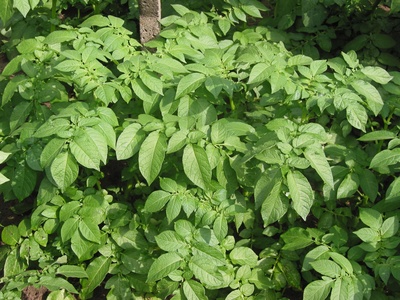
Potato
A starchy tuber that is incredibly versatile, grown worldwide. Available year-round, it’s a great source of potassium and can be baked, fried, boiled, or mashed.

Tomato
Botanically a fruit but used as a vegetable, it’s a juicy, acidic staple. Best in summer, tomatoes are high in lycopene and essential in sauces, salads, and sandwiches.

Lettuce
A popular leafy green with many varieties like romaine and iceberg. Available year-round, it forms the base of most salads and is a good source of vitamin K.
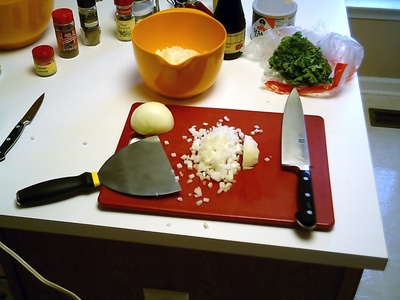
Onion
A pungent bulb vegetable that is a foundational ingredient in countless cuisines. Available year-round, its flavor mellows and sweetens when cooked. Rich in antioxidants.

Broccoli
Features a head of small, green flower buds and a thick stalk. Peak season is fall and winter. It’s a powerhouse of vitamins C and K and is great steamed or roasted.
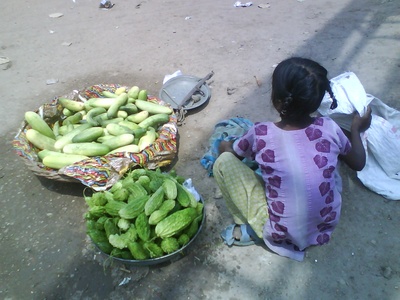
Cucumber
A refreshing gourd with high water content, known for its crisp texture. Best in summer, it’s typically eaten raw in salads, sandwiches, or pickled.

Bell Pepper
A sweet, crunchy fruit used as a vegetable, available in various colors. Peak season is summer. Excellent source of vitamin C, especially the red and yellow varieties.

Spinach
A tender, dark leafy green packed with iron, calcium, and vitamins. Available year-round but best in spring. Wilts down significantly when cooked, perfect for sautés and soups.
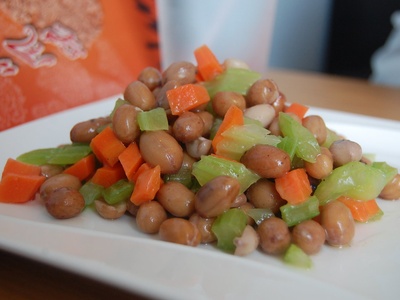
Celery
A crunchy, fibrous stem vegetable with a distinct, slightly salty flavor. Available year-round, its stalks are often used as a base for stocks and soups or eaten raw.
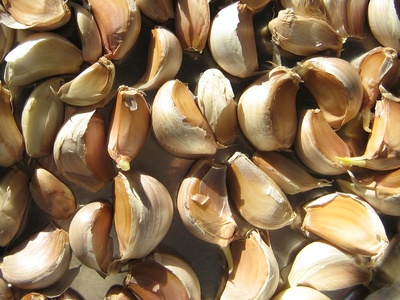
Garlic
A small, pungent bulb composed of individual cloves, used to flavor dishes globally. Available year-round, it’s known for its health benefits and aromatic qualities when cooked.
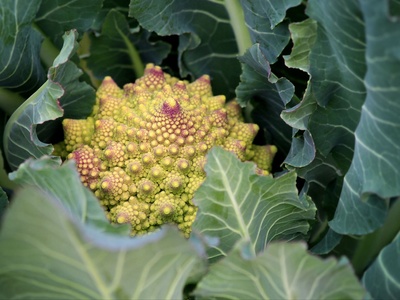
Cauliflower
A cruciferous vegetable with a compact head of white flower buds (florets). Peak season is fall. It has a mild, nutty flavor and can be roasted, steamed, or even mashed.

Zucchini
A type of summer squash with smooth, thin skin and soft flesh. Peak season is summer. It’s very versatile, great for grilling, sautéing, or spiralizing into noodles.

Green Bean
Tender, edible pods containing small seeds, also known as string beans. Peak season is summer. They are a good source of fiber and vitamin C, often steamed or sautéed.
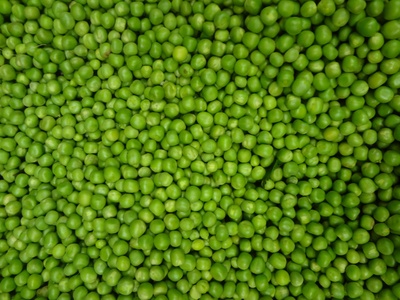
Pea
Small, sweet, spherical seeds found inside a pod. Peak season is spring. Green peas are often sold frozen or canned but are sweetest when fresh. Rich in protein and fiber.
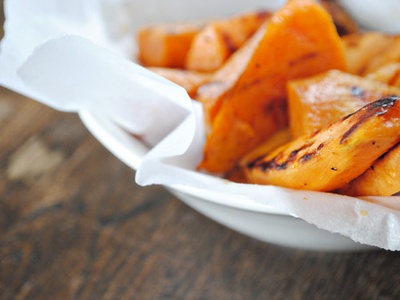
Sweet Potato
A starchy, sweet-tasting root vegetable with orange or purple flesh. Peak season is fall. It’s an excellent source of beta-carotene and can be baked, roasted, or mashed.
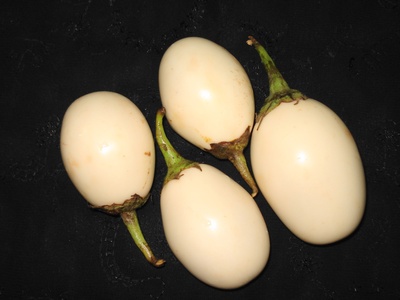
Eggplant
A glossy, purple nightshade with a spongy texture that absorbs flavors well. Peak season is late summer. Popular in Mediterranean and Asian cuisines, often grilled, fried, or baked.
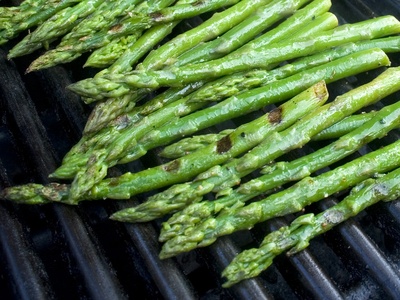
Asparagus
A spring vegetable known for its tender, spear-like stems. It has a distinctive, savory flavor and is best when roasted or grilled. A good source of folate and vitamins.
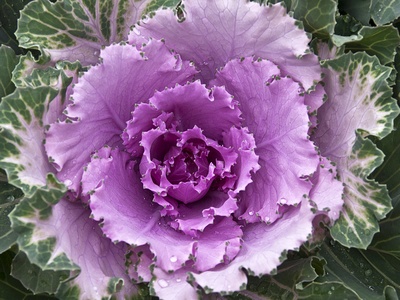
Cabbage
A dense-headed leafy green with waxy leaves, available in green, purple, and white. Available year-round, it’s used in coleslaw, sauerkraut, and stir-fries.

Radish
A small, crunchy root vegetable with a peppery flavor. Peak season is spring. Radishes are typically eaten raw in salads or as a garnish but can also be roasted.
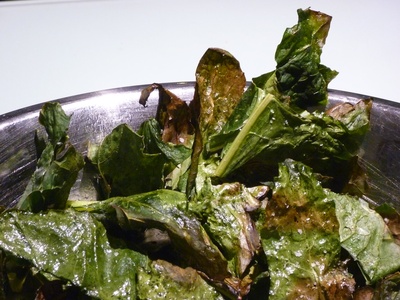
Kale
A hardy, dark leafy green with a slightly bitter, earthy flavor. Peak season is winter. It’s exceptionally nutrient-dense, high in vitamins A, C, and K. Great in salads or sautéed.
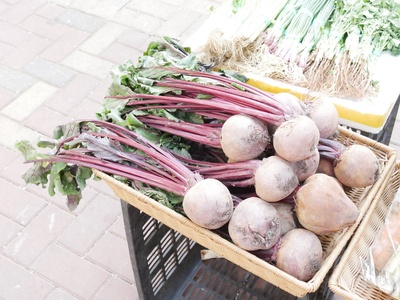
Beet
A sweet, earthy root vegetable known for its deep red or golden color. Peak season is summer through fall. The root can be roasted or boiled, and the leaves are also edible.
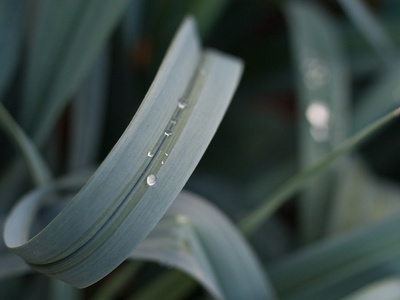
Leek
A member of the onion family with a milder, sweeter flavor. It has a thick white stalk and green leaves. Peak season is fall and winter. Used in soups, stews, and tarts.
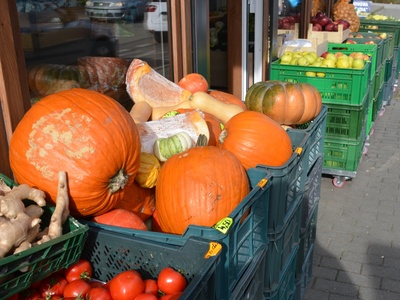
Pumpkin
A large, orange winter squash with a sweet, earthy flavor. Peak season is autumn. The flesh is used for pies, soups, and roasting, while the seeds are a popular snack.
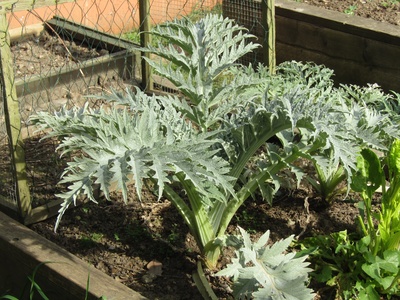
Artichoke
An unusual vegetable that is the bud of a thistle flower. Peak season is spring. The tender heart and base of the leaves are edible when cooked, often steamed or grilled.
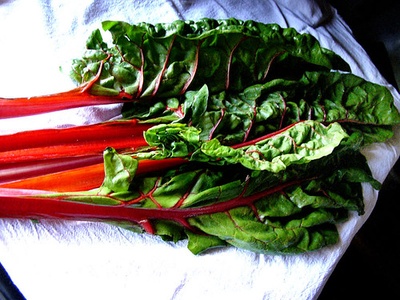
Swiss Chard
A leafy green with colorful, thick stems (in rainbow varieties) and tender leaves. Available year-round but best in summer. Can be used like spinach but the stems need longer cooking.
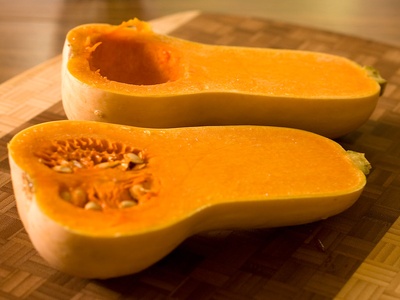
Butternut Squash
A tan-skinned winter squash with a sweet, nutty flavor and vibrant orange flesh. Peak season is fall and winter. Excellent for roasting, puréeing into soups, or in casseroles.
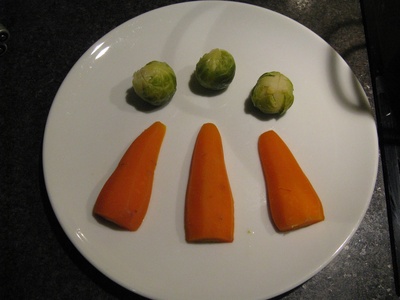
Brussels Sprout
Small, cabbage-like buds that grow on a thick stalk. Peak season is fall through early winter. They have a nutty, slightly bitter taste that sweetens when roasted.
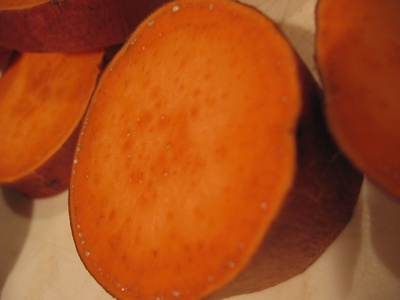
Yam
A starchy tuber, often confused with sweet potatoes but generally drier and less sweet. A staple food in many tropical countries, it can be boiled, fried, or roasted.
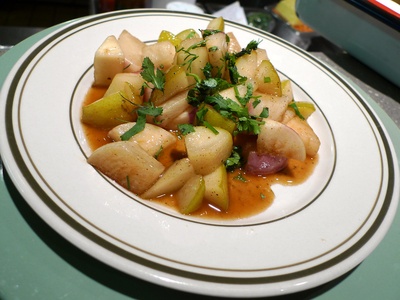
Turnip
A root vegetable with white flesh and a purple-tinged top. It has a mildly sweet and peppery flavor. Peak season is fall and winter. Can be roasted, mashed, or added to stews.
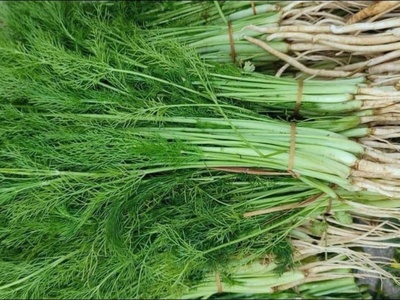
Fennel
A crunchy, bulbous stem vegetable with a distinct anise or licorice flavor. Peak season is fall through spring. The bulb can be eaten raw in salads or cooked to mellow its flavor.

Kohlrabi
A unique vegetable that is a swollen, turnip-like stem. It has a crisp texture and a mild, sweet flavor similar to broccoli stems. Eaten raw in slaws or cooked.

Collard Greens
Large, tough-leafed greens with a slightly bitter flavor. Peak season is winter. They require slow cooking, like braising, to become tender and are rich in vitamins.
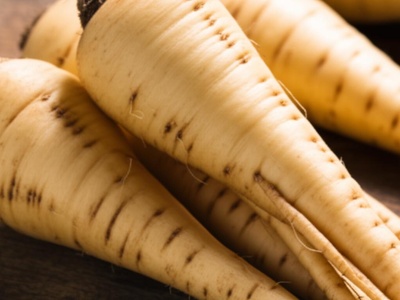
Parsnip
A cream-colored root vegetable similar to a carrot but with a sweeter, nuttier flavor. Peak season is fall and winter, with flavor improving after a frost. Great for roasting.
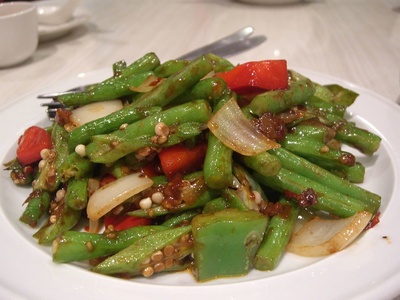
Okra
A green, ridged pod containing small edible seeds, known for its mucilaginous texture. Peak season is summer. A staple in Southern US, Caribbean, and Indian cooking.
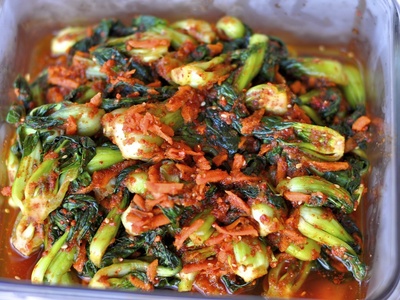
Bok Choy
A type of Chinese cabbage with crisp white stalks and smooth, dark green leaves. Available year-round, it has a mild, sweet flavor and is popular in stir-fries and soups.
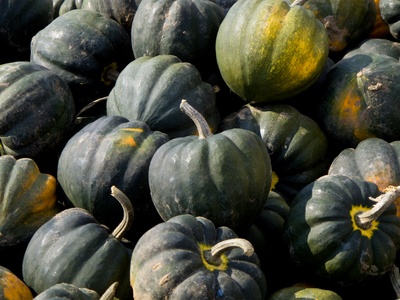
Acorn Squash
A small, dark green winter squash with a distinctive acorn shape and sweet, nutty flesh. Peak season is early fall through winter. Typically baked or roasted.
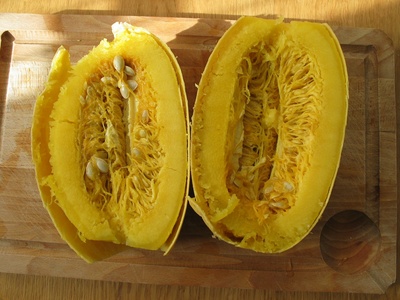
Spaghetti Squash
A unique winter squash whose flesh separates into spaghetti-like strands when cooked. Peak season is early fall through winter. A popular low-carb alternative to pasta.
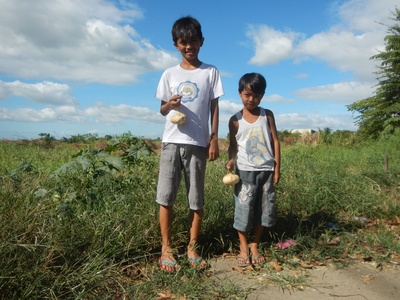
Jicama
A large, bulbous root tuber with a papery brown skin and crisp, juicy white flesh. It has a mildly sweet, nutty flavor and is usually eaten raw in salads and slaws.
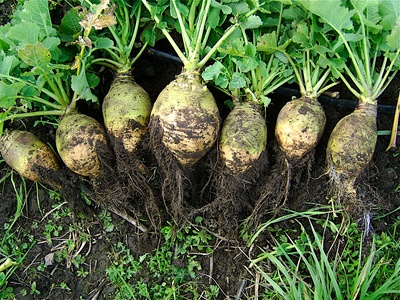
Rutabaga
A root vegetable that’s a cross between a cabbage and a turnip, with a sweet yet peppery flavor. Peak season is fall and winter. Often mashed, roasted, or used in stews.
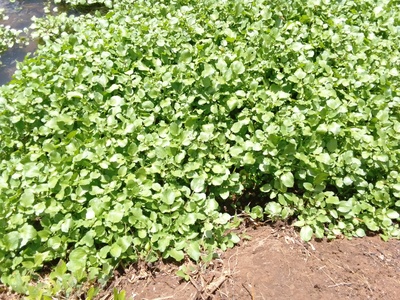
Watercress
A semi-aquatic leafy green with a pungent, peppery flavor. Available year-round but best in spring. Often used in salads, soups, and sandwiches.
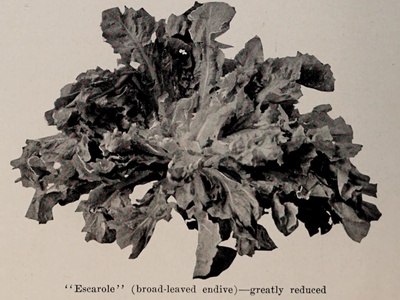
Endive
A leafy vegetable with a crisp texture and a slightly bitter taste. The pale, boat-shaped leaves are often used as an edible scoop for appetizers or chopped into salads.

Arugula
A leafy green with a bold, peppery, and slightly nutty flavor. Peak season is spring and fall. Popular in salads and as a topping for pizzas and pasta.
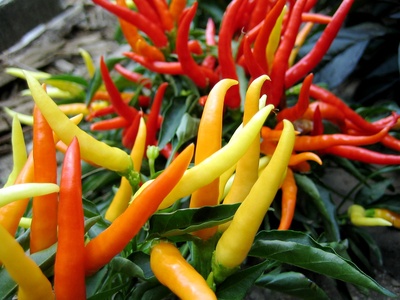
Chili Pepper
The fruit of a pepper plant, ranging in heat from mild to intensely spicy. Peak season is summer. Used to add heat and flavor to a vast range of dishes.
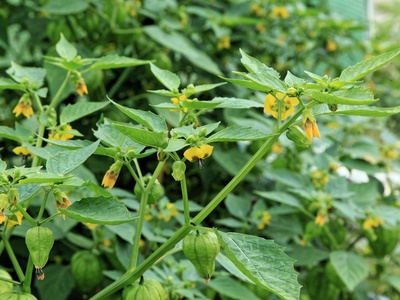
Tomatillo
A small, green fruit enclosed in a papery husk. It has a tart, citrusy flavor and is the key ingredient in salsa verde. Harvested in late summer and fall.
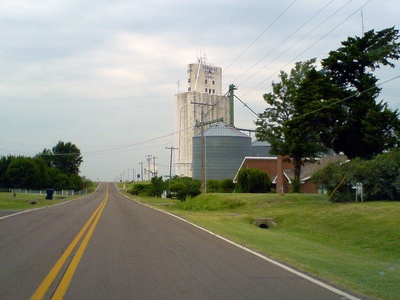
Corn
Though a grain, sweet corn is treated as a vegetable. The sweet kernels grow on a cob. Peak season is summer. Eaten on the cob, creamed, or as individual kernels.
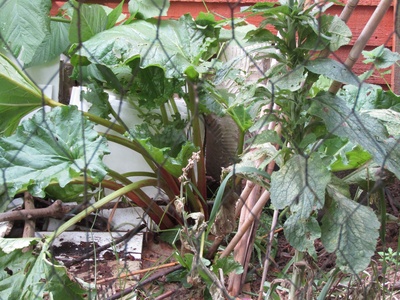
Rhubarb
A plant with thick, tart, celery-like stalks, often reddish-pink in color. Peak season is spring. Though a vegetable, it’s almost always used in sweet dishes like pies and jams.
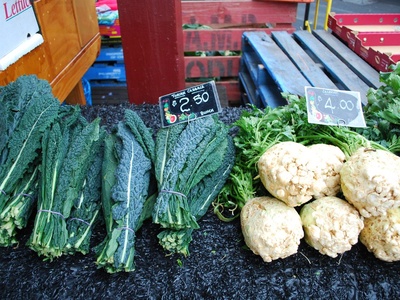
Celeriac
Also known as celery root, it’s a knobby, brown root with a crisp, white interior. It has a nutty, celery-like flavor and is great mashed, roasted, or in soups.

Shallot
A small type of onion with a milder, more delicate, and sweeter flavor. It grows in clusters of cloves. Used in sauces, vinaigrettes, and sautés for its refined taste.

Scallion
Also known as green onions, these are young onions harvested before the bulb has swollen. Both the white base and green leaves are edible, offering a mild onion flavor.

Fava Bean
Large, flat green beans inside a tough pod, requiring shelling and often skinning. They have a creamy, nutty, and slightly sweet flavor. Peak season is spring.

Soybean (Edamame)
Edamame are young, green soybeans, typically sold in the pod. They are steamed or boiled and served with salt. A great source of plant-based protein.
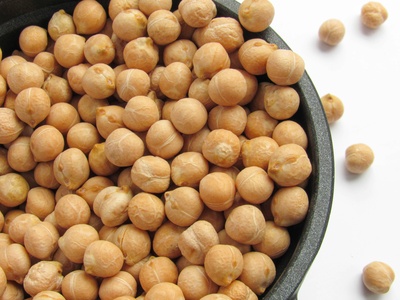
Chickpea
Also known as garbanzo beans, these nutty, buttery legumes are a staple in many cuisines. The key ingredient in hummus and falafel, they are a great source of protein.
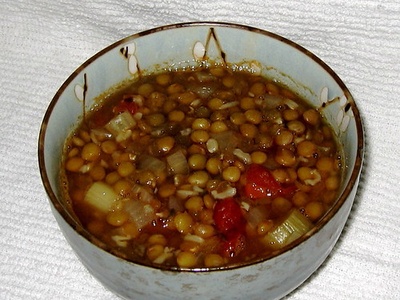
Lentil
Small, lens-shaped legumes that come in various colors like brown, green, and red. They cook quickly and are used in soups, stews, and salads. High in protein and fiber.
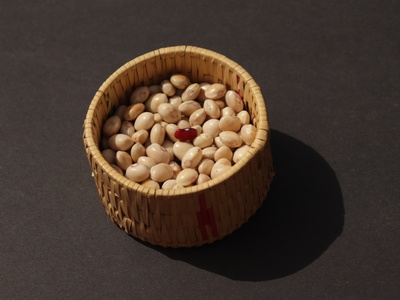
Lima Bean
Also known as butter beans, they have a starchy, creamy texture and a mild, buttery flavor. Often sold frozen or canned, they are used in succotash, soups, and stews.
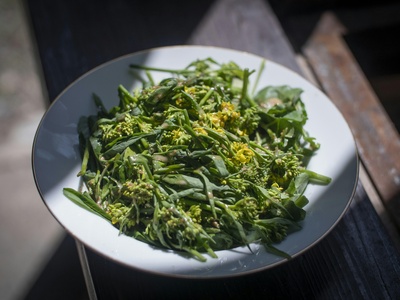
Mustard Greens
The leaves of the mustard plant, which have a pungent, peppery flavor that mellows with cooking. Peak season is winter and spring. Often braised or stewed.
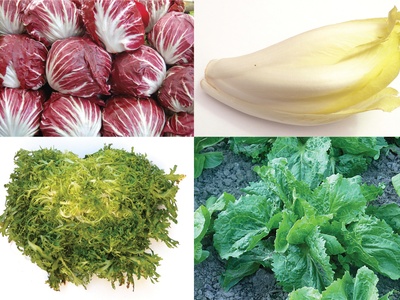
Radicchio
A type of chicory with deep reddish-purple leaves and white veins, known for its spicy and bitter taste. Often used in salads to add color and complexity, or grilled.

Broccoli Rabe
Also known as rapini, it features thin stalks, small leaves, and tiny broccoli-like buds. It has a pronounced bitter, nutty flavor and is often sautéed with garlic.

Salsify
A long, thin root vegetable with a flavor often compared to oysters or artichoke hearts. Can be boiled, fried, or used in soups and stews. Peak season is fall and winter.
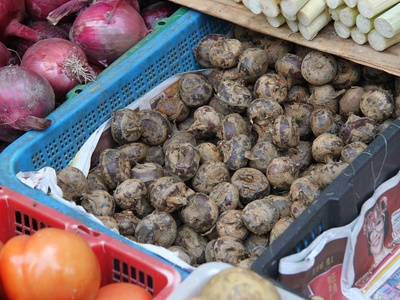
Water Chestnut
Not a nut, but a corm (tuber) of an aquatic plant. It has a crisp, crunchy texture and a mild, slightly sweet flavor. Often used in Asian stir-fries.

Galangal
A rhizome related to ginger and turmeric, with a sharp, citrusy, and slightly piney flavor. It’s much tougher than ginger and is typically sliced or pounded for use in curries and soups.

Ginger
A pungent, spicy, and aromatic rhizome used as both a spice and a vegetable. It’s a key ingredient in many Asian dishes, beverages, and traditional medicine.
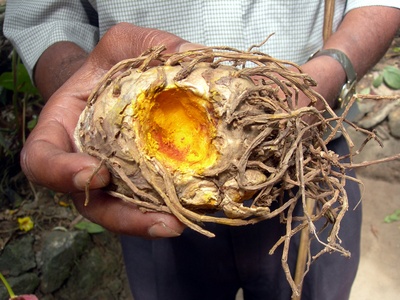
Turmeric
A bright orange rhizome known for its earthy, slightly bitter flavor and use as a coloring agent. A relative of ginger, it’s a staple in curries and has anti-inflammatory properties.
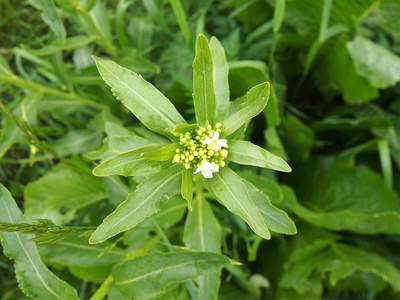
Horseradish
A pungent root vegetable known for its intense heat and spicy aroma. It is typically grated and used to make sauces and condiments. Best harvested in the fall.
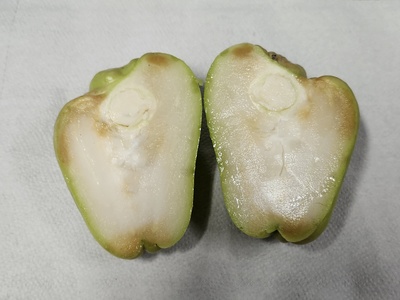
Chayote
A mild-flavored, pear-shaped gourd with a crisp texture similar to a water chestnut. It can be eaten raw in salads or cooked in a variety of dishes, from stews to stir-fries.
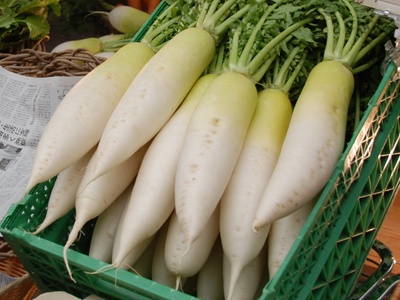
Daikon
A large, white winter radish with a milder, less peppery flavor than smaller radishes. It’s very versatile, often pickled, braised, grated into sauces, or added to soups.
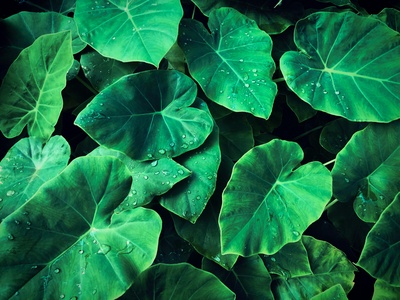
Taro
A starchy root vegetable with a brown, fibrous skin and a white or purple-flecked interior. It has a nutty, slightly sweet flavor when cooked and must be cooked to be edible.

Cassava
Also known as yuca, it’s a starchy tuberous root with a mild, slightly nutty flavor. It must be cooked properly to remove toxins. Used to make flour, bread, and fried dishes.

Cardoon
A relative of the artichoke, grown for its thick, celery-like leaf stalks rather than its flower buds. The stalks are tender with a flavor similar to artichoke, often braised or fried.

Nopales
The edible pads of the prickly pear cactus. When cooked, they have a tender texture and a tart, slightly citrusy flavor. The spines must be removed before preparation.

Kelp
Though a seaweed, it’s often used as a leafy sea vegetable, especially in East Asian cuisines. It has a salty, umami flavor and is used in soups, salads, and to make dashi.

Burdock Root
A long, slender root vegetable with a crisp texture and a sweet, earthy flavor. It is often stir-fried, braised, or pickled. Known for its detoxifying properties.
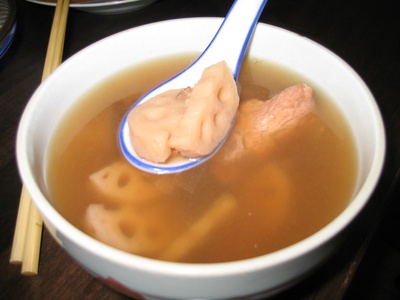
Lotus Root
The rhizome of the lotus plant, with a crunchy texture and a mildly sweet flavor. It has a beautiful lacy pattern when sliced and is used in stir-fries, soups, or fried as chips.
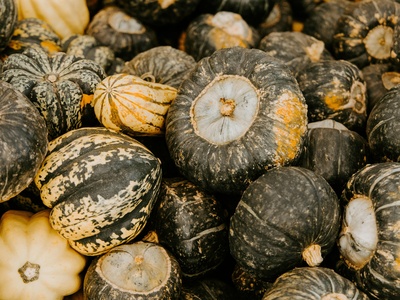
Pattypan Squash
A small, scalloped-edged summer squash. It has a tender texture and a mild, delicate flavor similar to zucchini. Best when harvested young, it can be grilled, stuffed, or sautéed.
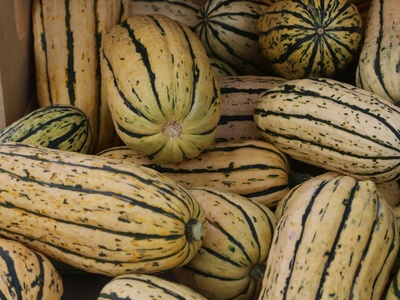
Delicata Squash
A small, oblong winter squash with cream-colored skin and green stripes. Known for its creamy, brown sugar-like flavor and edible skin. Excellent for roasting and stuffing.
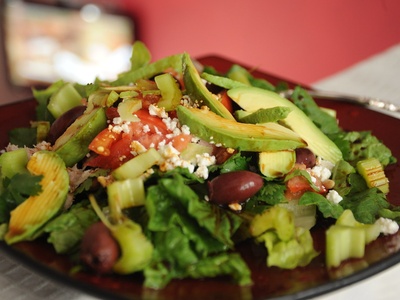
Romaine Lettuce
A variety of lettuce with tall, sturdy leaves and a firm rib down the center. Known for its crunchy texture and slightly bitter taste, it’s the classic choice for Caesar salads.

Iceberg Lettuce
A pale green lettuce known for its crisp texture and high water content. It has a very mild flavor, making it a popular choice for salads, sandwiches, and lettuce wraps.
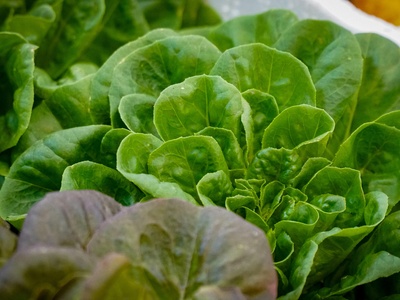
Butter Lettuce
Named for its soft, buttery texture and sweet, mild flavor. The tender, cup-shaped leaves are perfect for delicate salads and wraps.
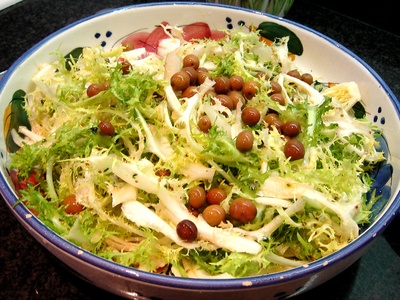
Frisée
A leafy green with frizzy, pale green to yellowish leaves. It has a slightly bitter flavor and a wonderfully crunchy texture, adding dimension to salads.
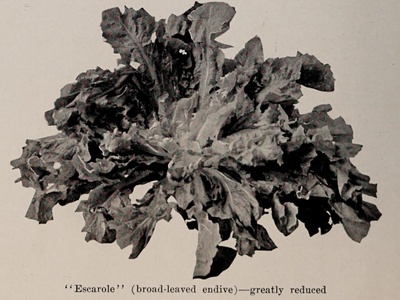
Escarole
Less bitter than its curly cousin frisée, with broad, pale green leaves. It has a pleasant bitterness that works well in salads or when braised in soups.

Mâche
Also known as lamb’s lettuce, it consists of small, dark green leaves with a velvety texture. It has a mild, nutty, and slightly sweet flavor, perfect for delicate salads.
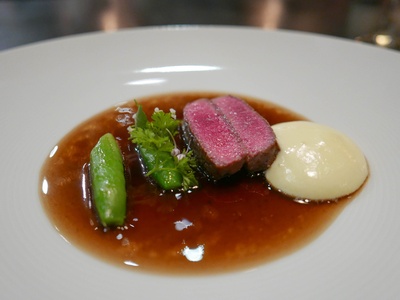
Sugar Snap Pea
A cross between snow peas and garden peas, featuring a plump, edible pod with sweet, full-sized peas inside. They are crisp and sweet, excellent eaten raw or lightly cooked.
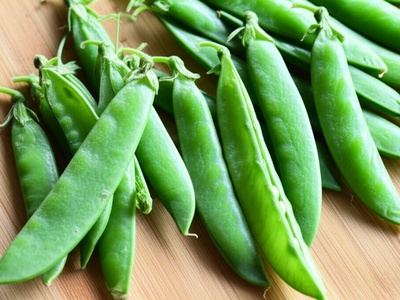
Snow Pea
A flat-podded pea with tiny seeds inside. The entire pod is tender and edible. They have a mild, sweet flavor and a crisp texture, ideal for stir-fries.
